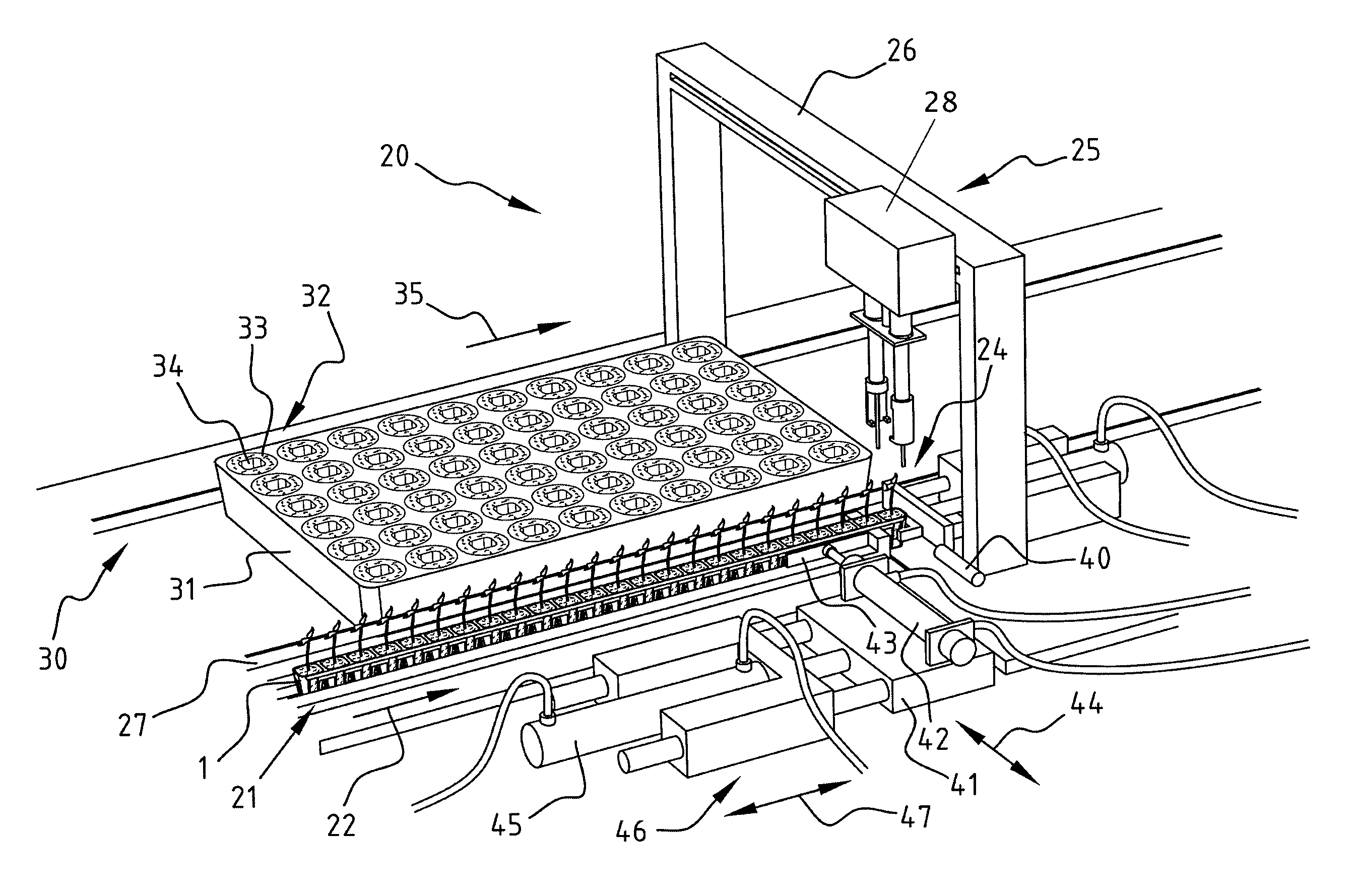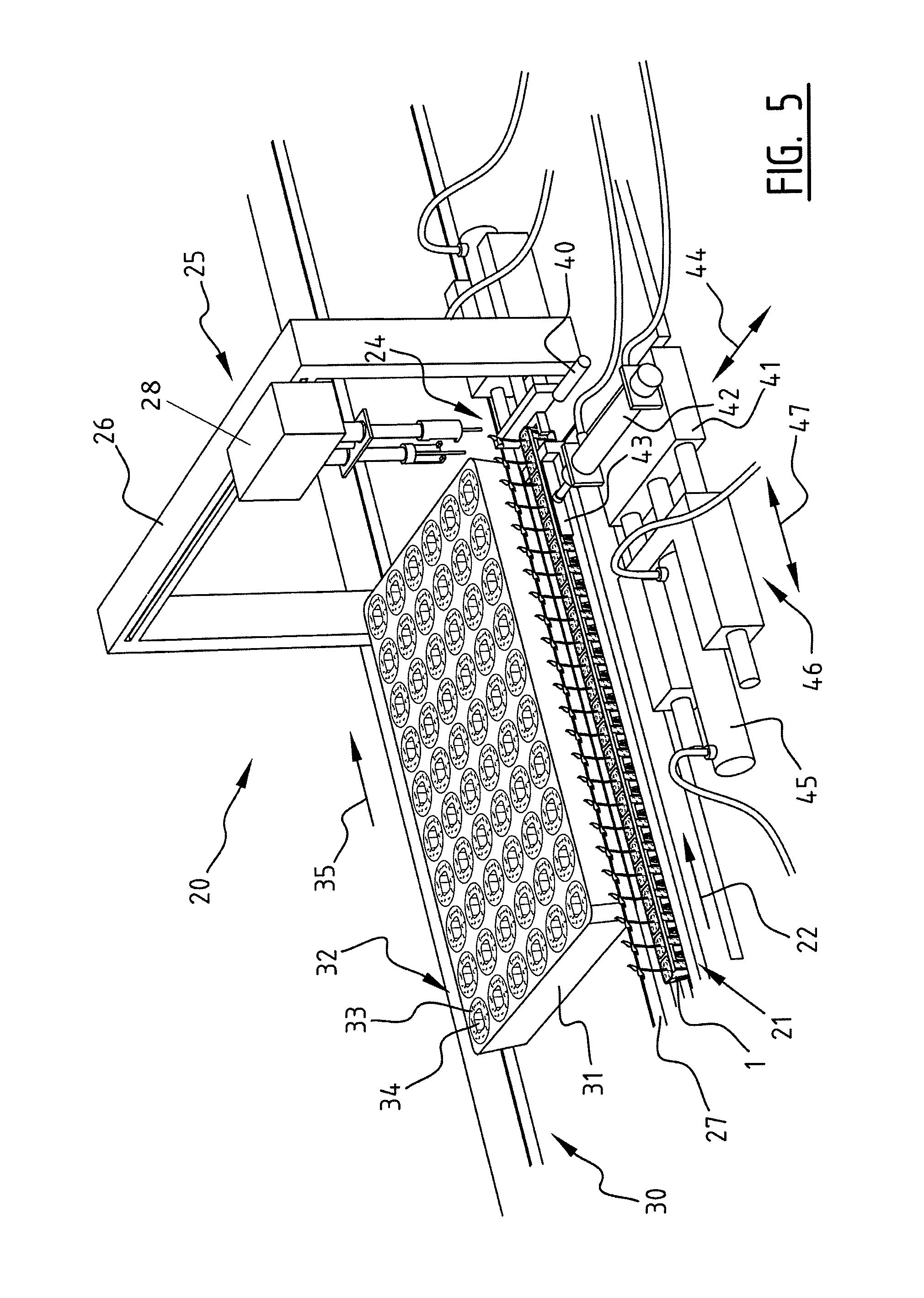System and method for transferring and singularizing plant material in a container, container for plant material, use of a container for plant material
a plant material and container technology, applied in the field of system and method for transferring and singularizing plant material in a container the use of a container for plant material, etc., can solve the problems of difficult to distinguish individual cells, inconvenience, particularly, etc., and achieve less soiling, less force or effort, and easy engagement
- Summary
- Abstract
- Description
- Claims
- Application Information
AI Technical Summary
Benefits of technology
Problems solved by technology
Method used
Image
Examples
Embodiment Construction
[0060]FIG. 1 is a perspective view of a container 1 according to the present invention. Container 1 has a row 3 of cells 4 which can be filled with plant material. As shown in FIG. 4, cells 4 are filled with substrate 5 and plant material 6 grows in substrate 5.
[0061]In FIG. 1 a container 1 comprises in longitudinal direction 2 a single series of cells 4. In the shown embodiment the number of cells is more than eight, in particular more than fifteen.
[0062]FIG. 2 is a side view of container 1 as according to II. Container 1 has a cell comprising a wall 9 and a base 10. Cell 4 is largely enclosed by wall 9. Substrate 6 and plant material 5 can hereby be received in the cell and positioned as shown in FIG. 4. In an embodiment a clearly defined base 10 is omitted and cell 4 comprises only side walls 9.
[0063]The wall 9 around the cell can particularly have openings 12 on the side transversely of longitudinal direction 2.
[0064]A connecting part 13 can be part of the cell, wherein this con...
PUM
 Login to View More
Login to View More Abstract
Description
Claims
Application Information
 Login to View More
Login to View More - R&D
- Intellectual Property
- Life Sciences
- Materials
- Tech Scout
- Unparalleled Data Quality
- Higher Quality Content
- 60% Fewer Hallucinations
Browse by: Latest US Patents, China's latest patents, Technical Efficacy Thesaurus, Application Domain, Technology Topic, Popular Technical Reports.
© 2025 PatSnap. All rights reserved.Legal|Privacy policy|Modern Slavery Act Transparency Statement|Sitemap|About US| Contact US: help@patsnap.com



